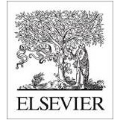The rapid expansion of the Internet of Things (IoT) ecosystem has transformed various sectors but has also introduced significant cybersecurity challenges. Traditional centralized security methods often struggle to balance privacy preservation and real-time threat detection in IoT networks. To address these issues, this study proposes a Federated Learning-Driven Cybersecurity Framework designed specifically for IoT environments. The framework enables decentralized data processing by training models locally on edge devices, ensuring data privacy. Secure aggregation of these locally trained models is achieved using homomorphic encryption, allowing collaborative learning without exposing sensitive information. The proposed framework utilizes recurrent neural networks (RNNs) for anomaly detection, optimized for resource-constrained IoT networks. Experimental results demonstrate that the system effectively detects complex cyber threats, including distributed denial-of-service (DDoS) attacks, with over 98% accuracy. Additionally, it improves energy efficiency by reducing resource consumption by 20% compared to centralized approaches. This research addresses critical gaps in IoT cybersecurity by integrating federated learning with advanced threat detection techniques. The framework offers a scalable and privacy-preserving solution adaptable to various IoT applications. Future work will explore the integration of blockchain for transparent model aggregation and quantum-resistant cryptographic methods to further enhance security in evolving technological landscapes.
翻译:暂无翻译



